

| Recommended inverter |
Conventional consumers |
Recommended battery capacity |
Conductor cross section |
Conductor length |
| DSW-300 (12 V or 24 V) |
= 45 Ah | = 16 mm2 | 1 m, 2 m, 3 m | |
| DSW-600 (12 V or 24 V) |
= 75 Ah | = 16 mm2 = 25 mm2 |
1 m, 2 m, 3 m3) 1 m, 2 m, 3 m, 4 m |
|
| DSW-1200 (12 V or 24 V) |
= 75 Ah | = 25 mm2 = 35 mm2 = 50 mm2 |
1 m3), 2 m3), 3 m3), 4 m3) 1 m, 2 m, 3 m3) 1 m, 2 m, 3 m, 4 m |
|
| DSW-2000 2000 W 12 V1) 24 V |
= 100 Ah | = 35 mm2 = 50 mm2 |
1 m3), 2 m3), 3 m3) 1 m, 2 m, 3 m, 4 m |
|
| DSW-2000-Synchron2) 4000 W (2 x 2000 W) 12 V1) |
= 200 Ah | 2 x 50 mm2 | 1 m, 2 m, 3 m, 4 m |
Multimedia devices/small consumers (up to 300 W)e.g. mobile phones, laptops, TV set, radios, charging devices |
|
Electrical appliances/tools (up to 500 W)e.g. jigsaw, electric whisk, hedge clippers, hand-held blender |
|
Electrical appliances/tools (up to 1000 W)e.g. angle grinder, coffee machine, hammer drill |
|
Electrical appliances with increased starting currente.g. pumps, compressors, refrigerators, air conditioning devices |
|
Electrical appliances/tools with high power consumptione.g. hair dryers, vacuum cleaners, fan heaters, electric lawnmowers |
Important: Cross-section of the connection cableFor safety reasons, we recommend that you always use a sufficiently dimensioned original connection cable. The original IVT connection cables are optimally matched to the inverter series and are additionally protected with a 200 A fuse. You will find the appropriate connection cables on the respective product page. |
Our recommendation: Installing a second batteryUsing a second battery is particularly reasonable when an inverter is used in a vehicle. If the second battery is discharged, the engine can still be started reliably using the vehicle's starter battery.A battery system consisting of two batteries and a second battery charger is also a useful addition in conjunction with a solar island system. This is a simple and cost-effective way of ensuring the energy supply for particularly important consumers at all times. |
| Recommended inverter |
|
Digital Sine Wave Inverters DSW-300, |
| Digital Sine Wave Inverters DSW-600 600 W, 12 V or 24 V Conventional consumers: Electrical appliances/tools up to 500 W Recommended battery capacity: = 75 Ah Suitable connection cable (cross-section | length): 16 mm2 | 1 m, 2 m, 3 m3) 25 mm2 | 3 m, 4 m |
| Digital Sine Wave Inverters DSW-1200, 1200 W, 12 V or 24 V Conventional consumers: Electrical appliances up to 1000 W Electrical appliances with increased starting current Recommended battery capacity: = 75 Ah Suitable connection cable (cross-section | length): 25 mm2 | 1 m3), 2 m3), 3 m3), 4 m3) 35 mm2 | 1 m, 2 m, 3 m3) 50 mm2 | 1 m, 2 m, 3 m, 4 m |
| Digital Sine Wave Inverters DSW-2000 2000 W, 12 V1) or 24 V Conventional consumers: Electrical appliances with high power consumption Electrical appliances with increased starting current Recommended battery capacity: = 100 Ah Suitable connection cable (cross-section | length): 35 mm2 | 1 m3), 2 m3), 3 m3) 50 mm2 | 1 m, 2 m, 3 m, 4 m |
| Digital Sine Wave Inverters DSW-2000-Synchron 4000 W (2 x 2000 W), 12 V1) Conventional consumers: Electrical appliances with high power consumption Electrical appliances with increased starting current Recommended battery capacity: = 200 Ah Suitable connection cable (cross-section | length): 2 x 50 mm2 | 1 m, 2 m, 3 m, 4 m |
Important: Cross-section of the connection cableFor safety reasons, we recommend that you always use a sufficiently dimensioned original connection cable. The original IVT connection cables are optimally matched to the inverter series and are additionally protected with a 200 A fuse. You will find the appropriate connection cables on the respective product page. |
Our recommendation: Installing a second batteryUsing a second battery is particularly reasonable when an inverter is used in a vehicle. If the second battery is discharged, the engine can still be started reliably using the vehicle's starter battery.A battery system consisting of two batteries and a second battery charger is also a useful addition in conjunction with a solar island system. This is a simple and cost-effective way of ensuring the energy supply for particularly important consumers at all times. |
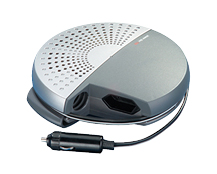 |
Sinus Inverter IVT SW-100, 12 V, 100 W Real sine wave alternating voltage 230 V/50 Hz Continuous output power 100 W | Peak output power 200 W Flexible connection via 12 V car adapter Item no. 430012 To the product > |
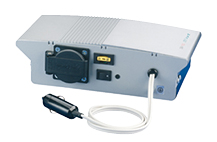 |
Sinus Inverter IVT SW-150, 12 V, 150 W Real sine wave alternating voltage 230 V/50 Hz Continuous output power 150 W | Peak output power 300 W Flexible connection via 12 V car adapter Item no. 430000 To the product > |
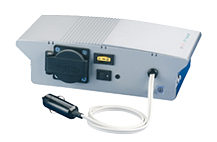 |
Sinus Inverter IVT SW-150, 24 V, 150 W Real sine wave alternating voltage 230 V/50 Hz Continuous output power 150 W | Peak output power 300 W Flexible connection via 24 V car adapter Item no. 430001 To the product > |
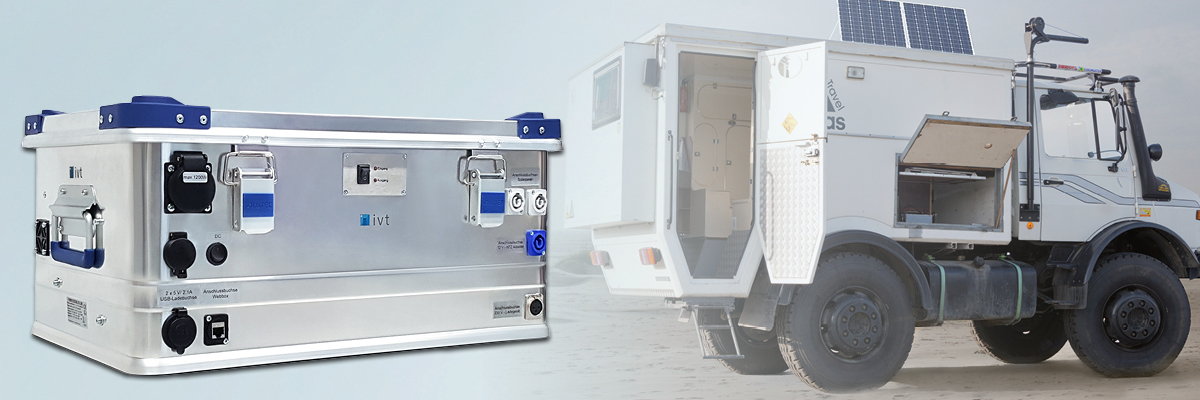
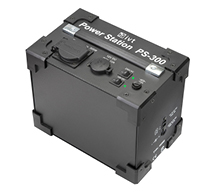 |
Power Station IVT PS-300 with integrated 300 W sine wave inverter Pure sine wave Continuous output power 300 W | Peak output power 600 W AGM battery 12 V, 20 Ah 230 V AC and 12 V DC load output Item no. 430100 To the product > |
The customised Power Stations are available with an output power of 600 W, 1200 W and 2000 W as a standard. The robust power boxes are ideal for commercial and private applications thanks to their well thought-out design, high-quality components, simple connection as well as flexible charging options.
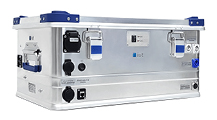 |
Portable Power Station IVT PS-600 with integrated 600 W Digital Sine Wave Inverter True sine wave 230 V/50 Hz Continuous output power 600 W | Peak output power 1200 W Powerful 12.8 V/80 Ah LiFePO4 battery with app function Switchable load outputs: 230 V AC, 12 V DC, 2 x 5 V USB Customisable and much more Item no. 430089 To the product > |
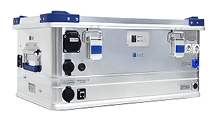 |
Portable Power Station IVT PS-1200 with integrated 1200 W Digital Sine Wave Inverter True sine wave 230 V/50 Hz Continuous output power 1200 W | Peak output power 2400 W Powerful 12.8 V/100 Ah LiFePO4 battery with app function Switchable load outputs: 230 V AC, 12 V DC, 2 x 5 V USB Customisable and much more Item no. 430074 To the product > |
 |
Portable Power Station IVT PS-2000 with integrated 2000 W Digital Sine Wave Inverter True sine wave 230 V/50 Hz Continuous output power 1200 W | Peak output power 2400 W Powerful 12.8 V/100 Ah LiFePO4 battery with app function Switchable load outputs: 230 V AC, 12 V DC, 2 x 5 V USB Customisable and much more Item no. 430090 To the product > |
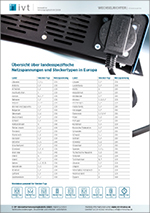 |
Overview of country-specific mains voltages and plug typesDownload Pdf > |
|
|
|
|
|
|
Coach |
Construction machinery |
Tractor |
Motorboat |
Sailing
boat |
Motorbike |
Scooter |
Moped |
Quad |
Lawn mower |
Electric wheelchair |
Golf trolley |
Snowmobile |
Jet Ski |
Solar system |
The user-friendly Staudte Hirsch automatic chargers are available as standard with a charging current between 1 A and 16 A, depending on the model.
|
|
 |
|||||
|
Battery |
Staudte Hirsch SH-3.160 12 V, 16 A |
|||||
| Charging method |
IU |
Multi-step | Multi-step | Multi-step | Multi-step | Multi-step |
| Charging current |
|
|
|
|
|
|
|
Regular mode, |
1.5 A ± 10 % |
1.0 A ± 10 % |
2.0 A ± 10 % |
4.5 A ± 10 % |
10.0 A ± 10 % |
16 A ± 10 % |
|
Motorbike mode, |
– | – | – |
1.0 A ± 10 % |
– | – |
| Battery capacity |
|
|
|
|
|
|
| Lead battery |
|
|
|
|
|
|
| Regular mode |
2.0 - 35.0 Ah |
from 1.2 Ah |
from 2.0 Ah |
from 14.0 Ah |
from 20.0 Ah |
from 30.0 Ah |
| Motorbike mode | – | – | – |
from 1.2 Ah |
– | – |
| Calcium battery | – |
from 1.2 Ah |
from 2.0 Ah |
from 14.0 Ah |
from 25.0 Ah |
from 30.0 Ah |
| Lithium battery | – |
from 1.2 Ah |
from 2.0 Ah |
from 25.0 Ah |
from 25.0 Ah |
from 30.0 Ah |
| Rechargeable battery types | ||||||
|
Lead-acid, lead-gel |
? | ? | ? | ? | ? | ? |
|
AGM |
? | o | o | ? | ? | ? |
|
Calcium |
– | o | o | o | ? | ? |
|
Lithium |
– | ? | ? | ? | ? | ? |
| Charging mode & functions | ||||||
|
Boost mode |
– | – | – | – | ? | ? |
|
12 V charging mode |
? | ? | ? | ? | ? | ? |
|
6 V charging mode |
– | ? | ? | ? | – | – |
|
Desulfation function |
? | – | – | – | – | – |
|
Automatic |
– | ? | ? | ? | ? | ? |
|
Float charging phase |
? | ? | ? | ? | ? | ? |
|
Auto-memory function |
– | ? | ? | ? | ? | ? |
| General | ||||||
|
Protection against short |
? | ? | ? | ? | ? | ? |
| IP protection (housing) |
IP 20 |
IP 20 |
IP 20 |
IP 65 |
IP 65 |
IP 20 |
|
Dimensions |
110 x 70 x 40 |
110 x 70 x 40 |
110 x 70 x 40 |
203 x 67 x 48 |
242 x 102 x 60 |
242 x 102 x 60 |
| Weight (without accessories) |
260 g |
250 g |
250 g |
490 g |
850 g |
960 g |
| Item no. | 331100 | 331200 | 331700 | 331300 | 331500 | 331600 |
| ? = yes o = Charging possible, but not optimised for this battery type. – = no |
||||||
Product overview Staudte Hirsch battery chargersWe have summarised the most important technical data for the Staudte Hirsch professional charger series for you in a concise table. |
After prior consultation, our Staudte Hirsch chargers can be customised according to your individual requirements. Contact us, we will be happy to advise you and make you an offer for your individual device or series.
The user-friendly Staudte Hirsch automatic chargers are available as standard with a charging current between 1 A and 16 A, depending on the model.
Product overview Staudte Hirsch battery chargersWe have summarised the most important technical data for the Staudte Hirsch professional charger series for you in a concise table. |
After prior consultation, our Staudte Hirsch chargers can be customised according to your individual requirements. Contact us, we will be happy to advise you and make you an offer for your individual device or series.
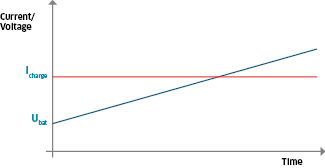
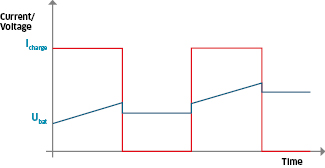
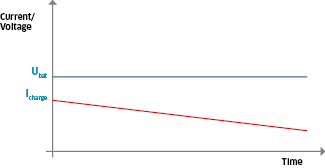
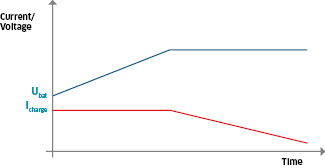
Multi-stage battery charging process (IUoU charging)This more complex, multi-stage charging technology also consists of a combination of the charging processes mentioned above. A microcontroller integrated into the charger ensures that the appropriate charging process is selected in order to charge the battery as quickly and efficiently as possible. |
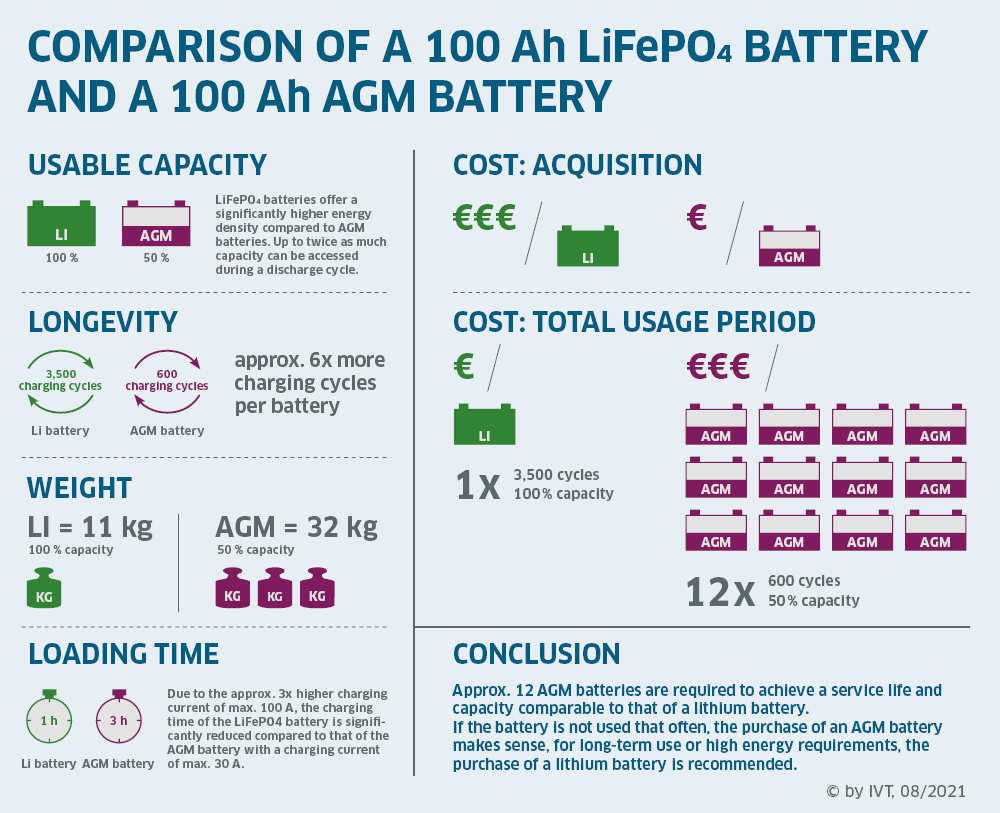
As a rule, a lead-acid, lead-gel or AGM battery can be replaced with a LiFePO4 battery. However, the existing charging profiles of the existing charging devices/chargers must be checked and adjusted if necessary. Use suitable chargers with a maximum end-of-charge voltage of 14.6 V. Even simple lead-gel, lead-acid and AGM battery chargers can damage the LiFePO4 battery when first connected. Check the charging parameters of the respective charger in advance.
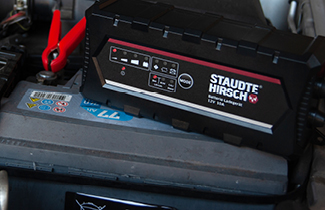

Batteries can only be charged gently and fully with a suitable charger. Always compare the technical data of the charger with that of the battery.
In order to utilise the full capacity of your battery, a full charge is a basic requirement.
Deep discharge occurs when more than 60 % of the battery capacity has been used up. Use loads that have deep discharge protection.
This prolongs the service life and prevents harmful deep discharging. The so-called "memory effect" does not occur with lead batteries.
If discharged batteries are not recharged for a longer period of time, there is a risk that the natural self-discharge will lead to a damaging deep discharge.
Charging a battery while the load is switched on can lead to excessive heating of the charger or battery.
By using chargers with float charging, you ensure that a loss of capacity due to self-discharge is compensated and that your storage battery can be optimally utilised even after a long period of inactivity.
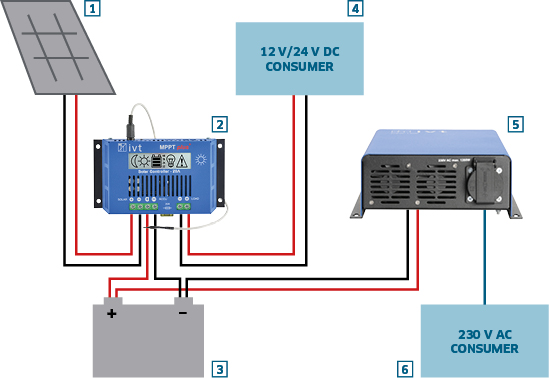


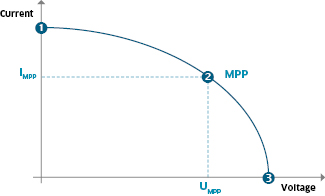
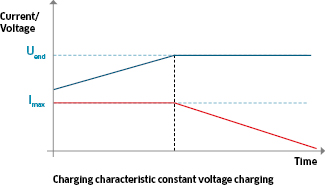
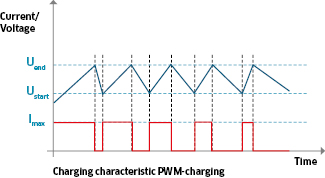
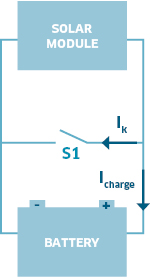 |
Shunt regulationDuring the charging process the solar module is connected with the battery via charge controller and charging current Icharge is fed from the solar module to the battery. Yet, this process is only given if the solar voltage is higher than the required cut-off voltage of the battery. If this cut-off voltage is reached, this is recognized by the charge controller and the solar cell is shorted via contact S1. Thus, the current flow from the solar module to the battery is stopped. With this, overcharging and damage to the battery is prevented. The entire current IK, provided by the solar module flows to the closed short circuit contact and will be converted to heat within the charge controller. On the solar module diagram (chart 1) the working point moves to point 1 at full battery condition. During the charging process the working point is between point 1 and 2. Advantages shunt regulation
Disadvantages shunt regulation
|
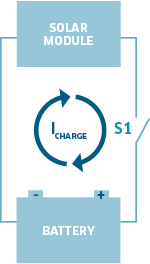 |
Serial regulationThe solar module is connected with the battery which is to be charged by means of the charge controller and charging current Icharge is fed into the battery. Yet, this process is only given if the solar voltage is higher than the required cut-off voltage of the battery. If the cut-off voltage is reached, the charge controller detects this and disconnects the battery by means of the switch contact S1. With this, the current flow to the battery is stopped. Thus, overcharging and damage to the battery is prevented. On the solar module diagram (chart 1) the working point moves to point 3 at full battery condition. During the charging process the working point is between 1 and 2. Advantages serial regulation
Disadvantage serial regulation
|
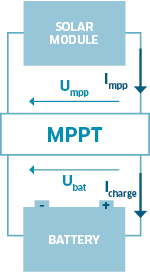 |
|

|
|

|
|

|
|

| Light color | Color temperature in Kelvin |
| Warm white | Below 3300 K |
| Neutral white | 3300 K to 5000 K |
| Daylight white/cold white | Above 5000 K |
| Light source Maximum power consumption (e.g. 3 W) as well as the manufacturer (Luxeon) and/or type of the used light source | Maximum luminous flux in lumen (e.g. 300 lm) |
|
| Beam angle and lighting range The opening angle in which the light is radiated. (e.g. 80°) | Maximum lighting distance in the strongest lighting mode (e.g. 70 m) |
|
| Runtime Maximum runtime (e.g. 4 h) in the selected performance level (e.g. 100 %) |
|
| Flashing function Maximum runtime in the selected flashing function (e.g. 35 h) |
|
| Battery type Details about the used energy source (e.g. Li-Ion) with notice regarding the ability to be recharged. |
|
| Focusable light max. light range (e.g. 200 m) |
|
| Emergency light function In the case of power outage the lamp turns on automatically, turning into a safe emergency light. |
|
| Magnetic The light is attached using magnets |
|
| Clip Version The light is attached using clips |
|
| Light with earthing contact plug Cable length 5 m |
|
| Connection cable with open ends 1 m connection cable with open ends |
|
| Operating temperature Suitable for operation at temperatures (e.g. +70 °C to -20 °C) |
|
| IP protection type Defines the suitability of electrical equipment for the various environmental conditions (e.g. housing protected against dust, rain and water jets) |
|
| Explosion protection This product is suitable for use in environment with risk of explosion |
|
| Touch switch The lamp is switched on /off by touching |
|
| Wall mounted The lamp is suitable for wall installation |
|
| Ceiling mounted The lamp is suitable for ceiling installation |
|
| CE symbol This symbol confirms the fulfilment of elementary requirements regarding the applying EU regulations |
|
| Mobile application Suitable for use in the most various vehicles (e.g. private car) |
|
| Stationary application Suitable for us in buildings with autarchic 12 V/24 V power supply (e.g. solar or wind power) |
Key figure 1:
|
Key figure 2:
|
| 0 No protection | 0 No protection |
| 1 Protection against solid foreign objects with diameter > 50 mm | 1 Protection against vertically falling drops of water |
| 2 Protection against solid foreign objects with diameter > 12.5 mm | 2 Protection against inclined (up to 15°) falling drops of water |
| 3 Protection against solid foreign objects with diameter > 2.5 mm | 3 Protection against falling sprays of water |
| 4 Protection against solid foreign objects with diameter > 1 mm | 4 Protection against splash water |
| 5 Dust-protected | 5 Protection against jets of water (nozzle) |
| 6 Dustproof | 6 Protection against strong jets of water |
| 7 Protection against the effect of temporary immersion under water | |
| 8 Protection against permanent immersion under water |
 |
 |
Widespread collapse of the power gridA blackout is defined as a widespread collapse of the European transmission grid, something that has not happened since the Second World War. It could theoretically occur if the European transmission grid is confronted with several major disruptions at the same time - for example, due to a massive storm event that causes major damage to the grid. However, experts consider these large-scale power outages to be highly unlikely. What could theoretically become necessary, however, is a so-called brownout. |
Controlled shutdown of the electricity gridBrownout - or controlled load disconnection - refers to the targeted disconnection of individual regions and areas in order to save electricity and thus keep the grid stable. This has not happened in Germany since the Second World War and is considered a last resort by electricity grid operators when electricity demand can no longer be fully covered. Due to the tense situation on the electricity market, the problems of the nuclear power plants in France and the uncertainty of natural gas supplies, such brownouts have become somewhat more likely, but according to the grid operators, the risk is still rather low. |

| Type |  Staudte Hirsch SH-5.100 |
 Staudte Hirsch SH-5.300 |
 IVT PL-828 |
 IVT PL-850 |
 IVT PL-830 |
| Light sources | 2 x 8 W LEDs | 3 W LED | 5 W LED | 3 W LED | 3 W LED | 0.8 W SMD LED |
| Luminous flux | 1040 lm | 225 lm | 350 lm | 240 lm | 240 lm | 40 lm SDM LED |
| Current supply | Li-Ion Akku 7.4 V | 8000 mAh |
Li-Ion Akku 7.4 V | 2200 mAh |
Li-Ion Akku 7.4 V | 4400 mAh |
Blei Akku 6.0 V | 4500 mAh |
Li-Ion Akku 7.4 V | 2200 mAh |
| Lighting modes | 5 | 2 | 3 | 4 | 5 |
| Operation time (Brightness/Mode) |
6 h (100 %) 11 h (50 %) 16 h (Flashing mode) |
4.5 h (100 %) 9.0 h (50 %) |
4 h (100 %) 8 h (50 %) 16 h (Flashing mode) |
20 h (100 %) 25 h (70 %) 30 h (30 %) 35 h (Flashing mode) |
5 h (100 %) 8 h (50 %) 18 h (Flashing mode) 35 h (SMD LED) 4.5 h (100 % + SMD) |
|
|
Can be used as emergency lighting outside explosive environmentsEx-protected LED work lamp ATEXBEAM PL-AT800, 3 W, Li-Ion battery |
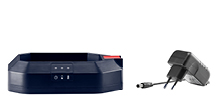 |
Step 1 Connect the charging cradle or charging/wall bracket to the power supply unit and the power supply unit to the power supply. |
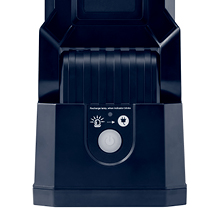 |
Step 2 Switch the light on. For the SH-5.100, SH-5.300 and PL-850 models, you can select the mode. |
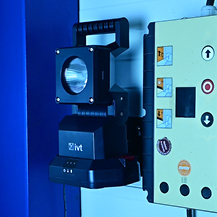 |
Step 3 Place the light in the charging cradle. The light goes out. |
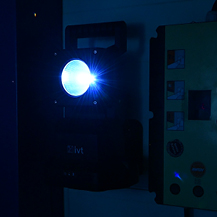 |
Step 4 Simulate a power failure by unplugging the mains adapter from the socket – the light switches on automatically in the selected mode or at the brightest brightness level. |



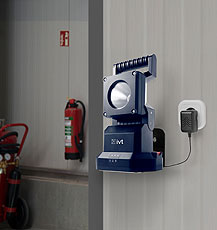
Ex-protected LED work lamp ATEXBEAM PL-AT800, 3 W, Li-Ion battery
The emergency lighting function is integrated into the Ex light as standard.
Outside the hazardous area, the Ex-certified PL-AT800 LED work light can also be used as emergency lighting.
Item no. 312218
To the product >
 Step 1 Connect the charging cradle or charging/wall bracket to the power supply unit and the power supply unit to the power supply. |
 Step 2 Switch the light on. For the SH-5.100, SH-5.300 and PL-850 models, you can select the mode. |
 Step 3 Place the light in the charging cradle. The light goes out. |
 Step 4 Simulate a power failure by unplugging the mains adapter from the socket – the light switches on automatically in the selected mode or at the brightest brightness level. |
ATEX is an abbreviation for the French term Atmosphères Explosiblesandaims to protect humans, the environment and machinery from explosions. ATEX directives apply to all devices, machines and protective systems that are used in potentially explosive atmospheres.
For example, the chemical industry, which works with gases or flammable liquids, the metal industry and the construction industry, as well as refineries that work with crude oil or biogases.
In agriculture and the wood industry, highly flammable dust mixtures are produced that could potentially lead to explosions. Only lamps with ATEX approval may be used in this environment.

| EX | Meaning of the labelling according to the ATEX directive |
| II | ATEX device group The ATEX explosion groups define the authorised place of use. I = Use in mining and underground workings II = Use in all other areas, e.g. chemical plants, pharmaceuticals, oil rigs, refineries, etc. |
| 2 | ATEX device category (application in respective Ex-zone) The devices are classified according to the conformity assessment procedure into device categories 1 to 3. 1 = No ignition sources are present in the event of rare and unexpected malfunctions 2 = No ignition sources are present in the event of malfunctions to be expected during normal operation 3 = No ignition sources are present during normal operation |
| G/D/M | Explosive atmosphere The device groups and categories are supplemented by a letter for the potentially explosive atmosphere: G = gas, vapour, mist, D = dust, M = methane, coal dust 1G | Risk: constant, frequent or long-term 1G, 2G | Risk: occasional 1G, 2G, 3G | Risk: rare or short-term 1D | Risk: constant, frequent or long-term 1D, 2D | Risk: occasional 1D, 2D, 3D | Risk: rare or short-term M1, M2 | Risk: mining |
| Ex | Explosion protected operation material |
| ib | Ignition protection type |
| II C | Explosion group for gases and vapours The classification in explosion groups considers the probability of the presence of an explosive atmosphere and the simultaneous occurrence of a defect on the device which could lead to ignition. The hazard increases from A to C. A: very high level of safety B: high level of safety C: normal level of safety |
| T4 | Temperature class The classification into temperature classed considers the ignition points of the gases/dusts and indicates the maximum allowed surface temperature of the device. The hazard increases from T1 to T6. T1: 450 °C T2: 300 °C T3: 200 °C T4: 135 °C T5: 100 °C T6: 85 °C |
| device category | 1 | 2 | 3 |
| G (Gas, vapour, mist) | 0 | 1 | 2 |
| D (Dust) | 20 | 21 | 22 |
| Frequency | constantly, long-term, frequently | occasionally | rarely or only for a short period |